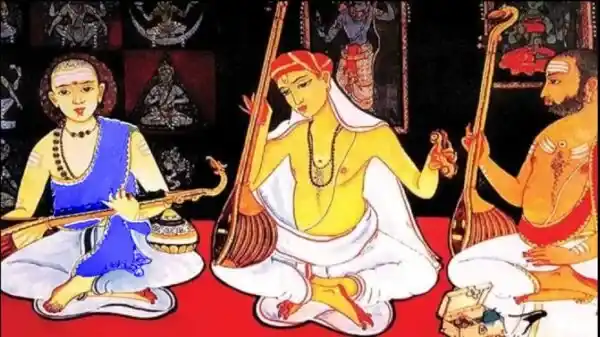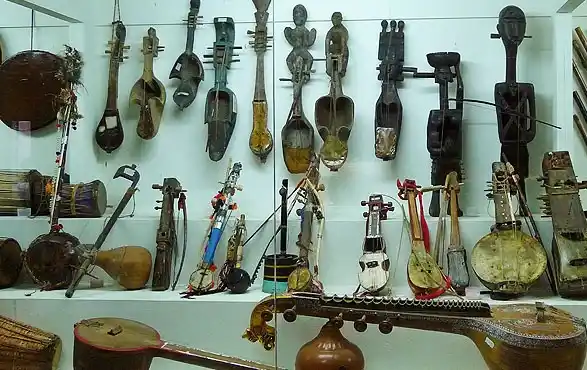Blog
The Evolution of Indian Music: From Ancient Roots to Modern Melodies

Paleolithic:
At Bhimbetka rock shelters, a UNESCO world heritage site situated at the Indian state Madhya Pradesh shows the 30,000 year old cave paintings shows some dance form existed during the time along with arts of rock drums and simple instruments.
Neolithic:
From 4000 BCE onward, narrow bar shaped polished stone celts like earlier Indian musical instruments were found in an excavation site, Sankarjang in Odisha. Along with it, singing and dancing postures of damsels, several music instruments and many more sculptural evidences were found in Khandagiri and Udayagiri, Bhuvaneswar.
Indus Valley Era:
The 2500 BCE sculpture of a Dancing Girl found at Indus Valley Civilization also provided information about the art forms during that time. Paintings of a man with dhol (a kind of double headed drum) and a women holding drum was also found.
Vedic and ancient era:
From the Vedic times onwards (between 1500 BCE and 800 BCE), the art forms in India took a great leap forward, where evidences of dance and songs can be seen in post-Vedic Hindu texts including the epic Ramayana (dance by celestial nymphs, Ravana’s favorite instrument as Veena, his wives excellence in dancing and singing, several string instruments, songs of Gandharvas, etc)
The 500 BCE Tamil work Tholkappivam (most ancient extant Tamil grammar text as well as oldest extant long work of Tamil literature), there are several references about music. In Sangam literature (the ancient Tamil literature and is the earliest known literature of South India), Mathuraikkanci, a poem refers to women singing for God’s mercy during childbirth.
Medieval era:
Early 14th century under the Khiljis, the land of music saw concerts and competitions between well-formed Hindustani and Carnatic musicians (two sub genres of Indian music).
Twentieth Century:
Bollywood influenced western world to Indian music. Many western musicians get influenced and mixed Indian instruments and music in their concerts. Apart from Classical music forms (Hindustani and Carnatic), many folk music forms also exists in India, which can be dated to ages back.


Your blog is a constant source of inspiration for me. Your passion for your subject matter is palpable, and it’s clear that you pour your heart and soul into every post. Keep up the incredible work!
Thank you so much! Your kind words truly mean a lot to us. We’re so glad you’re enjoying the blog!